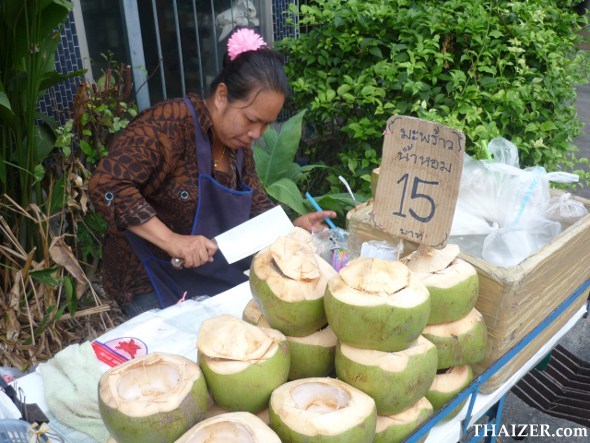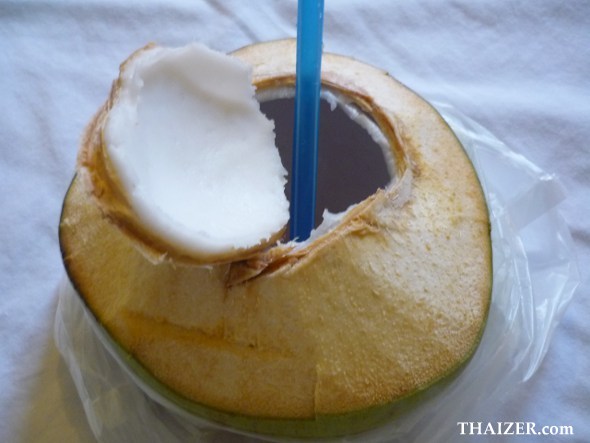Available year-round in Thailand, coconuts (maphrao) are a versatile fruit and are used in a number of different ways. On the street, you’ll see young coconuts being sold by vendors and at hawker stalls. The vendor will chop off the top for you before placing the coconut into a plastic bag with a straw. If you don’t want to carry around a whole coconut, most vendors also offer the choice of a ready-to-go plastic bag complete with coconut water and coconut flesh. Prices vary depending on location and size of the coconut, but expect to pay approximately 15 to 25 Baht for a young coconut.

The clear liquid found in young coconuts contains a mix of sugars, vitamins, minerals and electrolytes which are especially beneficial in tackling thirst and dealing with dehydration. If you’re walking around in the heat and humidity of Thailand make sure you drink plenty of water, but you also need to replace the salts (also known as electrolytes) you lose through sweating. Coconut water is a great way to replace those electrolytes.

To get the coconut milk or cream that features so much in Thai cooking, the flesh or meat of mature coconuts is grated and the liquid extracted. There are differing opinions on how good or bad this coconut milk is for your health, but as part of a balanced diet experts agree there is no problem and famous Thai dishes such as kaeng khiao wan (green curry), tom kha kai and khao soi are all the tastier for the addition of coconut.